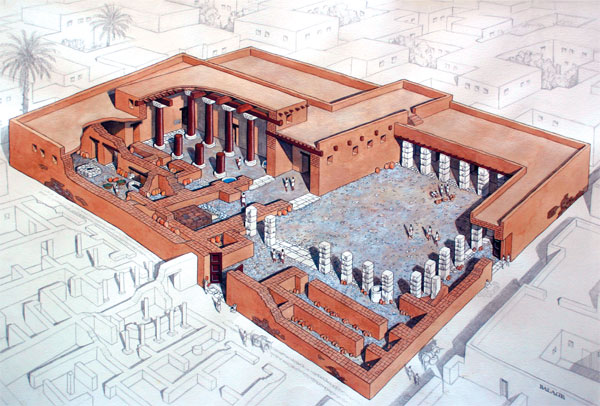Image Details

Temple complex 650 at Ekron, dating to the seventh century B.C.E., is one of the largest buildings of its kind ever excavated in modern-day Israel. The nearly 26,000-square-foot structure is three buildings in one: In the first, a series of rooms surrounded a large open courtyard (at right in the artist’s rendition above); the second consisted of a long hallway (at center in drawing) that served as a reception or throne room (the throne would have sat on the raised platform on the near end of the hallway); and the third structure was a columned sanctuary (upper left in drawing) that had a Holy of Holies at its far end. Also indicated in the drawing (along the far wall at upper left) is one of the most important finds made at Ekron—a royal inscription.
Like so much else at Ekron, Temple 650 testifies to a mixture of cultures. The throne room is typical of Assyrian architecture and the sanctuary reflects Phoenician design, but the round column bases are an indication of Philistine construction.
